Docs
Create Domain-based Content Clusters with Contentmaps AI
The Domain Maps feature allows you to analyze the topical structure and content clusters within your website or any other domain you specify. This provides a comprehensive view of your online presence and identifies opportunities to strengthen your content strategy.
How it Works
When you create a new Domain Maps project, simply enter the domain you'd like to analyze. Our systems will then crawl the website, extract key content signals, and visualize the resulting Topical Map.

Optional: You can also specify certain topics you would like to get a more in-depth analysis on using the “Filter by Topics” field. It can take up to 5 topics, and the recommended number of topics to use is 3 keywords in this field.
Analyze Topical Authority
The Topical Authority metric indicates how strongly your website is positioned as an authority on a given topic. This is determined by factors like:
- The number and quality of pages/content covering the topic
- The presence and prominence of the topic across your website
- How search engines and other external sources perceive your expertise on the topic
By understanding your Topical Authority, you can prioritize content investments, internal linking strategies, and other tactics to reinforce your authority in key areas.
Explore the Domain Map
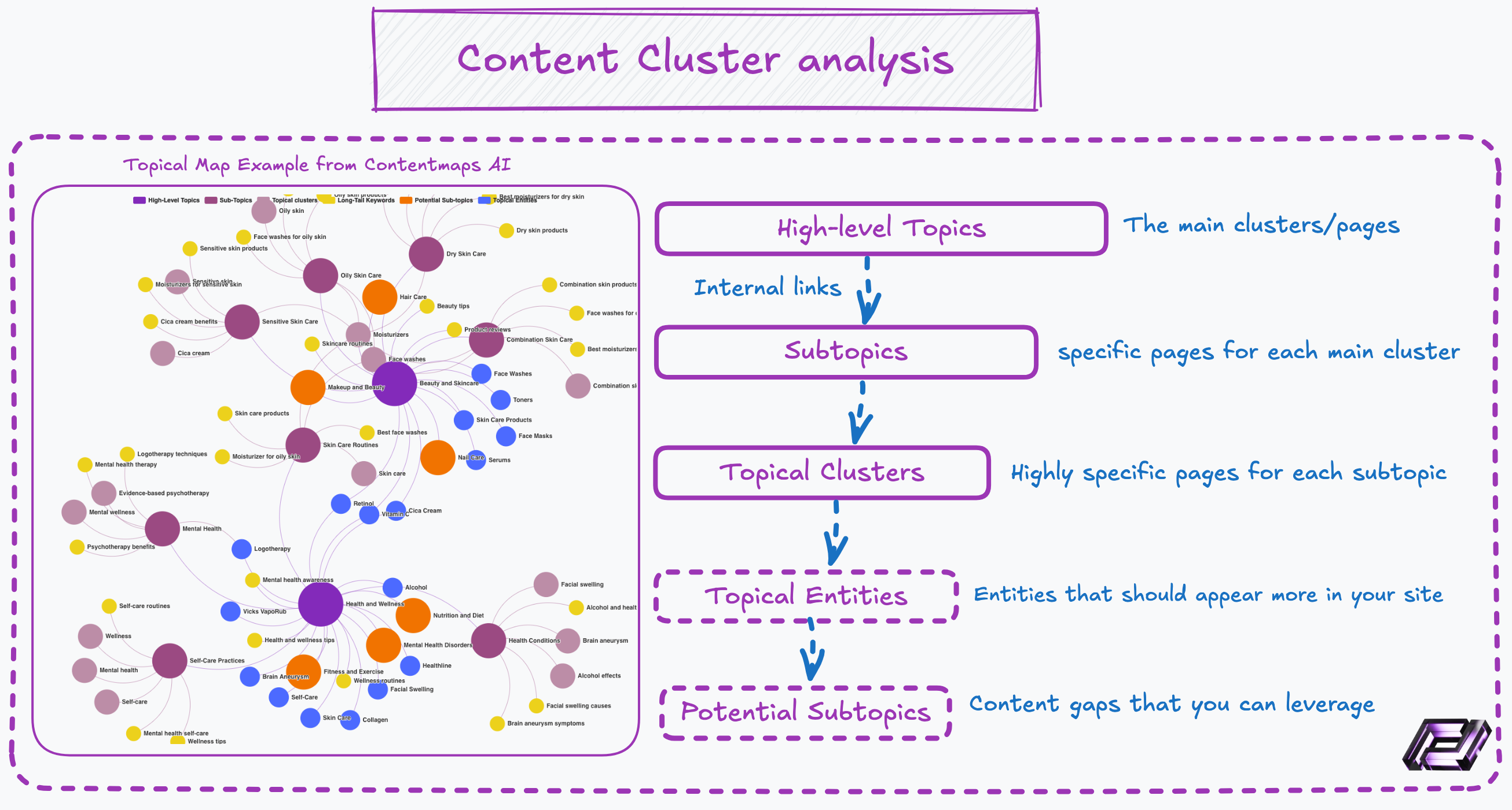
This Topical Map reveals:
- High-Level Topics: The primary subject areas and focus points of your website
- Sub-Topics: The specific subtopics and subtopics-of-subtopics that make up each high-level topic
- Topical Clusters: Groups of closely related subtopics that form natural content hubs
- Long-Tail Keywords: Emerging or niche topics that could be expanded upon
- Potential Sub-Topics: Gaps or underdeveloped areas that present content opportunities
Note: You can fully interact with the topical map by zooming in/out, clicking on certain categories (e.g. Topical Clusters) to disappear, and focusing on certain elements.
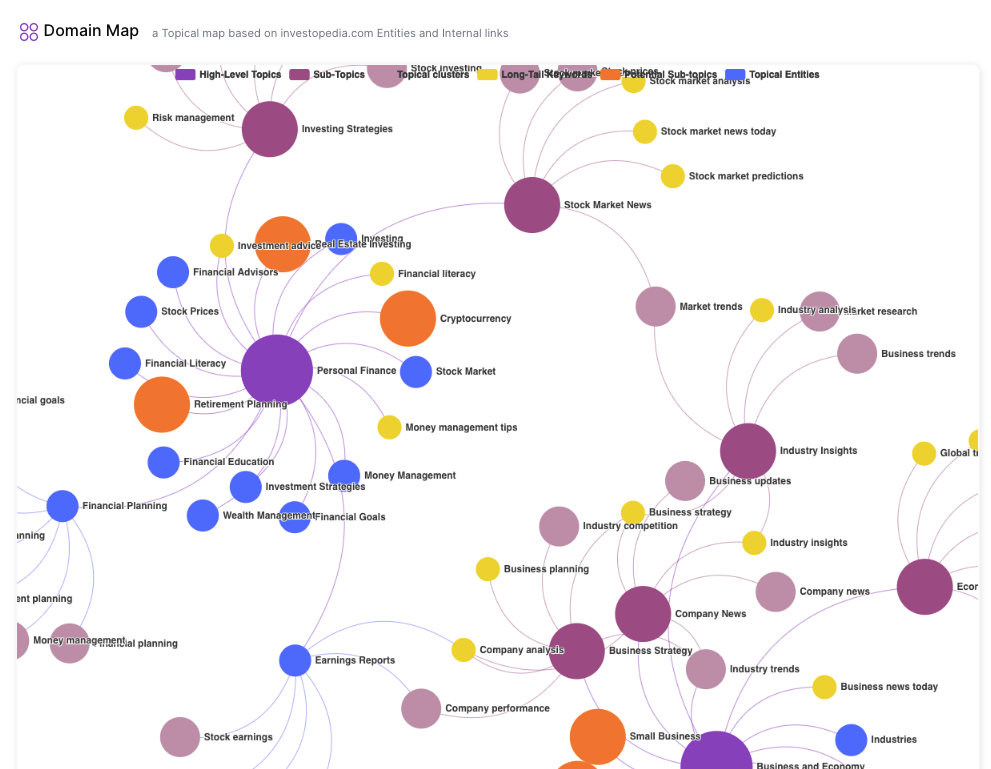
The interactive Domain Map visualization allows you to deep dive into the topical structure of your website. You can:
- Hover over individual topics to see more details
- Click on topics to expand and explore sub-topics
- Rearrange the layout to focus on specific areas of interest
- Export the map data to CSV for further analysis
Optimize Your SEO Strategy

With the insights from your Domain Map, you can optimize your content strategy in several ways:
- Identify high-potential topics to create new content around
- Strengthen your authority on core competencies by filling content gaps
- Improve internal linking to reinforce topical clusters and user journeys
- Align your content production with the natural language and intent of your audience
Identify Content Gaps & Opportunities
Analyzing your Domain Map can reveal opportunities to expand your content coverage and better serve your audience.
Nodes that are isolated or underdeveloped suggest content gaps that could be filled. Conversely, densely connected nodes highlight high-performing topic clusters that may be worth doubling down on.
Intent Clustering
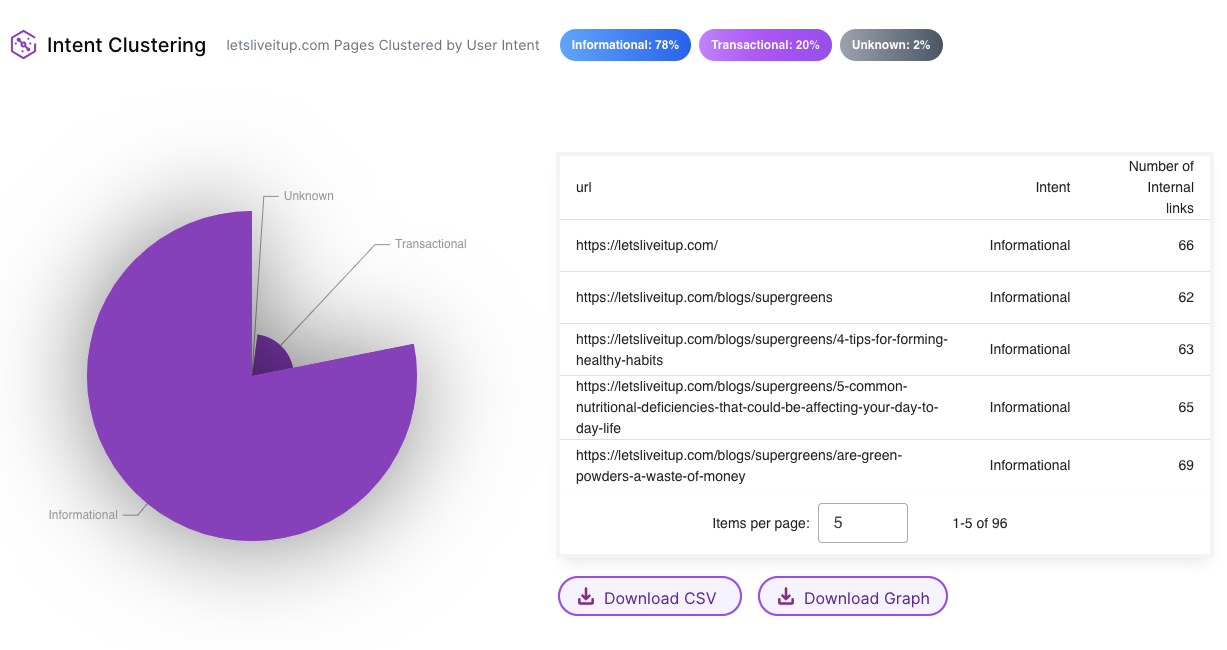
Our platform automatically analyzes and categorizes your website pages based on user intent:
- Informational Pages (blogs, articles, etc.): Content that educates and informs visitors
- Transactional Pages (money pages): Pages designed for conversions and purchases
- Unknown: Pages that don't clearly fall into the above categories
Each page is analyzed and tagged with its primary intent, helping you understand your content distribution and identify potential gaps in your content strategy.
Internal Link Analysis
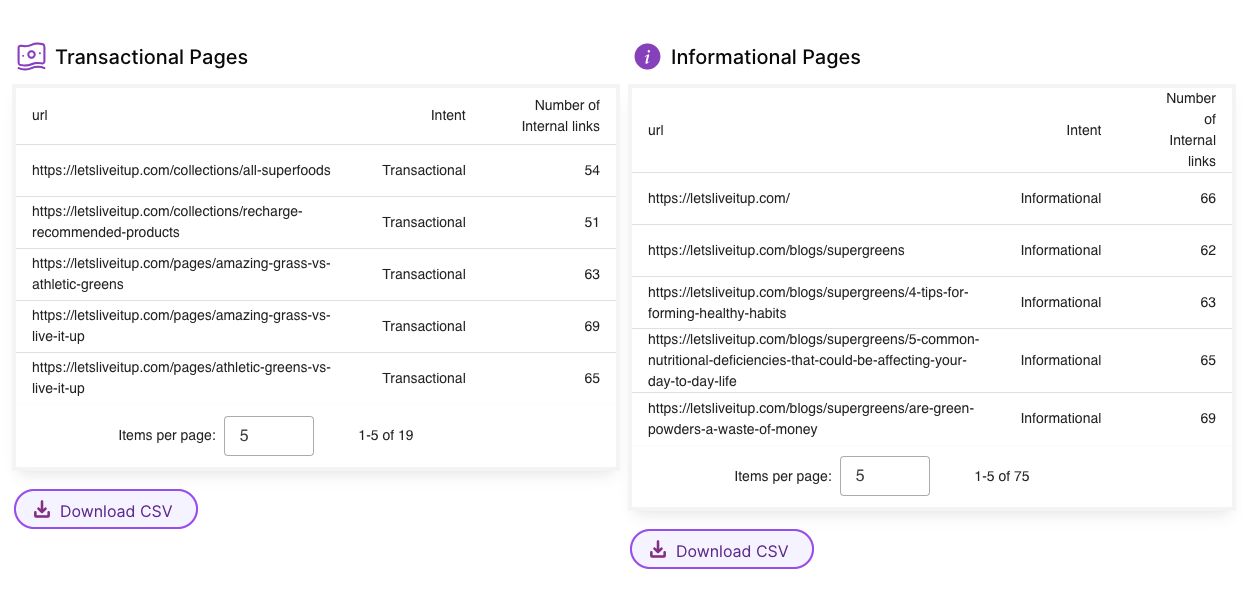
The platform provides detailed insights into your website's internal linking structure:
- Link Count Tracking: Monitor the number of internal links pointing to each page
- Link Distribution: Visualize how link equity flows through your site
- Page Authority Indicators: Understand which pages receive the most internal link support
Content Clustering Analysis

Our system organizes your content into logical clusters based on:
Keyword Hierarchy
- High-level Topics
- Sub-topics
- Related Keywords
SEO Performance Metrics
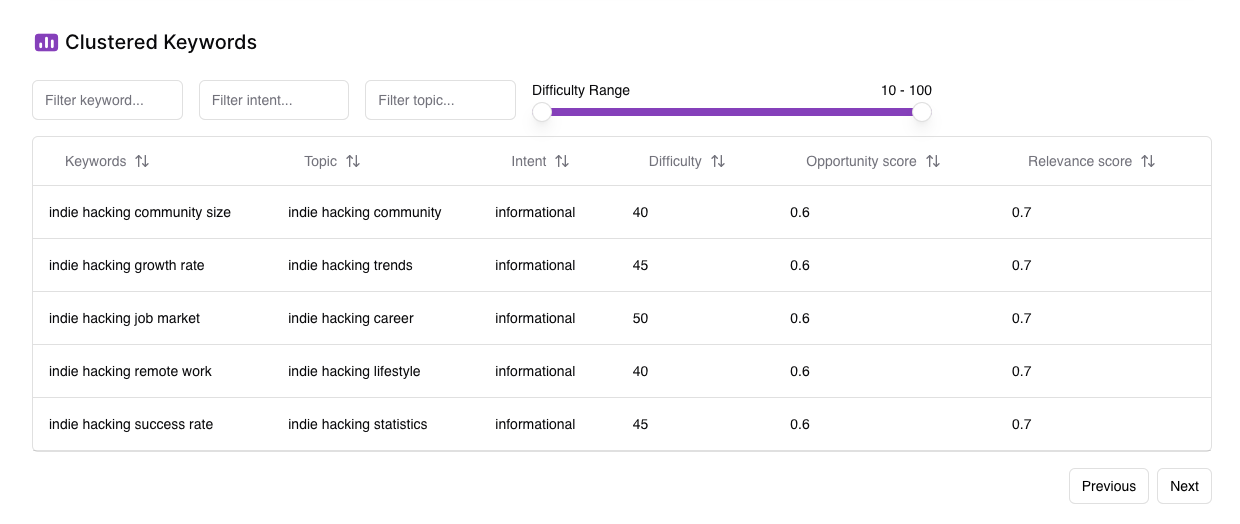
Track important metrics for each page:
- Intent distribution percentages
- Internal link counts
- Content relationship mapping
Understanding Your Analysis
Intent Distribution
Your content analysis will show the distribution of page types:
- Percentage of informational content
- Percentage of transactional content
- Percentage of unclassified content
This helps you maintain a healthy balance between educational and commercial content.
Content Structure Visualization
The platform provides visual representations of your content structure:
- Pie charts showing the intent distribution
- Detailed page listings with link counts
- Keyword cluster relationships
Tips for Success
Internal Linking
- Monitor link distribution across pages
- Ensure important pages receive appropriate internal link support
- Review pages with unusually high or low link counts
Keyword Clustering
- Organize content around main topics
- Develop comprehensive coverage within each cluster
- Address user needs at different stages of the journey
Using Your Analysis
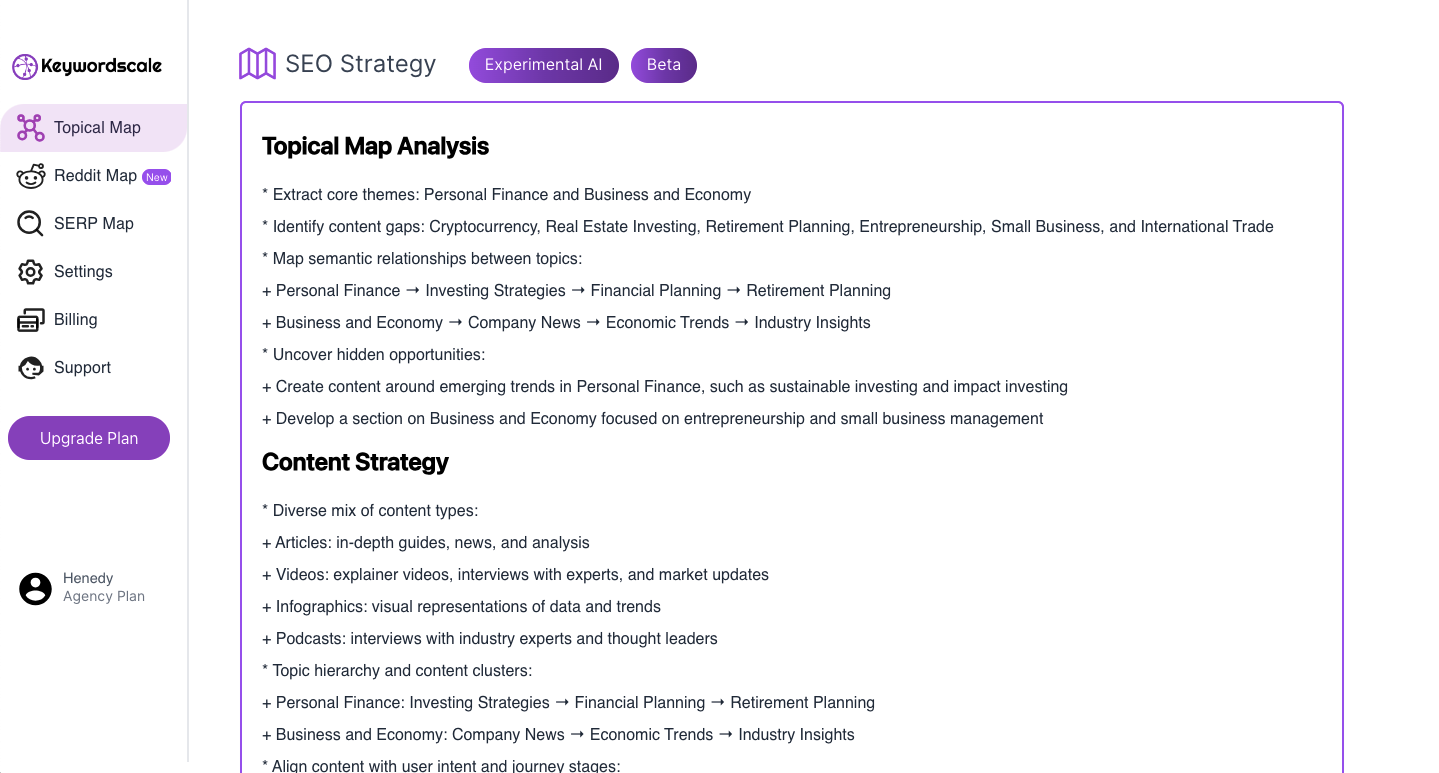
- Review your intent distribution
- Identify areas needing more content
- Optimize the internal linking structure
- Develop content clusters systematically
- Balance informational and transactional content
- Monitor and adjust based on performance data
This analysis helps you make data-driven decisions about your content strategy. Use these insights to inform your SEO, content marketing, and thought leadership initiatives and drive meaningful results
